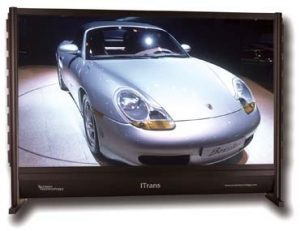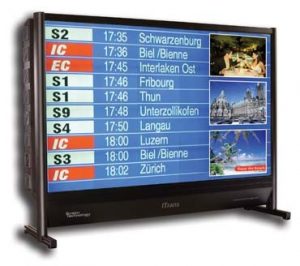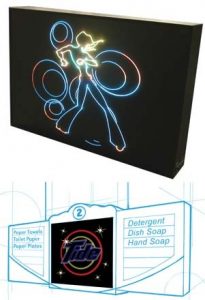Electric Signs
Talkin’ About My G-G-(G2) Generation
Lasers, fiberoptics and enhanced LCDs have stepped into the next generation of electric digital signage.
Published
18 years agoon
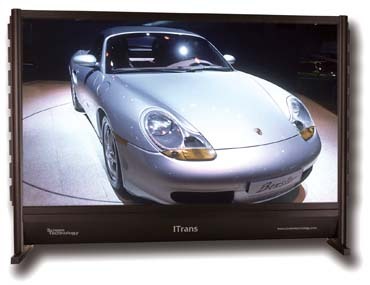
During the past decade, the sign industry has adopted three, electronic digital sign (EDS) technologies. LEDs illuminate outdoor videoscreens and electronic message centers, and LCD and plasma screens advertise indoor, retail messages.
The first generation, or G1, of EDS pioneers has stepped into its second, or G2, stage. ST interviewed two companies that will be releasing new sign technologies in this latter phase. A hybrid LCD screen system tiles modified LCD screens into large-format screens, and a laser, rear-projection display system aims at the kiosk and POP markets.
Modular LCD displays
Screen Technology (Cambridge, England) has created a high-resolution and scalable LCD display system that functions similarly to video walls. The display offers a series of stackable, modular, sign cabinets that allows its final screen face to appear as a single, "seamless," large-format display.
Typically, large-scale, seamless screens accommodate front or rear video-projection systems, which work best under controlled, indoor-light conditions.
LED videoscreens also present a bright, large-format, high-definition image. An LED screen comprises separate LED tiles stacked together. The separations between the tiles are called "mullions," which, in an ideal state, are invisible.
AdvertisementHowever, when viewed closely, LED screen images distort and pixilate. When LED screens lose brightness, the dim tiles contrast with bright ones and cause uneven screen brightness.
Andy Holmes, Screen Technology’s commercial director, outlined EDS’ three "Holy Grails":
1. Scale. The screen should be as large or small as needed.
2. Resolution. Screens should attain, or match, high-definition standards.
3. Brilliance and brightness. Ideally, the screen should be readable indoors and outdoors.
Holmes said, "LED screens have brightness and scale, but not resolution, when viewed closely. LCD and plasma give you low brightness, and good resolution, but can’t be built up to a very large scale. LCD/plasma screens are getting bigger all the time, but, for practical reasons, they’ll probably never get much bigger than an 80- to 100-in. diagonal, because of handling and manufacturing problems."
AdvertisementScreen Technology’s high-resolution electronic display, the ITrans, creates an intermediate viewing solution between LCD’s close-up view and the LED videoscreens’ distance view. Often, electronic displays are placed in malls, transit terminals and hotels, where pedestrians view the screens at varying distances.
An ITrans module comprises a Samsung or LG Electronics 15-in. laptop screen, which produces a large, mosaic-like, but uniform, output surface, or the "source screen." The source screen is placed within a special sign cabinet, where standard, fluorescent lamps replace the existing backlight.
To achieve mullion-free viewing, a second, 2.8-in.- (70mm) thick, translucent display, called the "front screen" or "front plate," is placed over the original LCD screen to form the ITrans tile module. The trick is to re-transmit the high-resolution LCD image to its new, "primary," exterior sign face so that it replicates the original, high-resolution, LCD image.
Inserted between the two screens, a polycarbonate, fiberoptic device transmits the image from the LCD source screen to the 17-in. secondary screen. The fiberoptic device looks like a delicate comb, and each tooth is a specially designed fiberoptic element (there are more than 30,000 fiberoptic elements per module) that functions like a mini lens. The comb’s fiberoptic "lenslets" transmit up to 90% of the light from the original LCD screen, to the second screen’s exterior face. Including the lamp house, the LCD and the ITrans face, the entire screen thickness measures 9 in.
Holmes said, "The fiberoptic comb, with its highly fragmented lenslets, gives each ITrans module a resolution of a 1.7mm-pixel pitch [roughly the same resolution as a large plasma screen] with, crucially, a 95% pixel fill. This gives far smoother images than LED displays, whose 20% pixel fill causes a pixilation problem when those signs are viewed close up. Our ITrans LCD screens are rated at least four times the pixel density of the highest-resolution LED screen, but they’re considerably cheaper per square meter than the typical, 3mm LED screen."
The combs also block the ambient light around the front screen to improve projecting brightness and contrast ratios, thus making the display completely viewable in direct sunlight. The source screen is illuminated by a series of standard, fluorescent, $3 lamps (six lamps per module), which last approximately 20,000 hours (two years of constant use).
AdvertisementThe front screen’s 17-in. diagonal measures 10% larger than its source, LCD screen. Because the fiberoptic front screen is larger than its base sign cabinet, ITrans modules stacked side by side appear seamless when illuminated. ITrans LCD modules can be butted together, just as LED video modules are assembled for conferences or tradeshows, to create up to 165-ft. (50-meter) screens.
Screen Technology is setting up a worldwide distribution network of product dealers who offer ITrans systems in various display configurations. ITrans screens have been installed in the plate-glass facade of Bloomberg’s TV and financial services headquarters in Paris. Other ITrans systems have been supplied to rental specialists in London, Dubai and Singapore. Projects in international airports, shopping malls and retail stores are in the pipeline.
The ITrans viewing modules will include:
• Self-contained "monolithic" plug-and-play units with 34- to 108-in. diagonal screens in any aspect ratio.
• A 34-in., self-contained module, which comprises four, 17-in.-diagonal tiles, which can be stacked into any size signs or display screens.
• A 34-in., portable video module, derived from the installation module, for the audio-video rental market. Units can be stacked in the standard television mode (4:3 ratio) and the HD, wide-screen mode (16:9 ratio), and any other column or banner shape.
• An OEM program that supplies ITrans tiles directly to end users for their own monolithic or modular applications.
Lasers beam up signs
Laser projection has evolved into a fully developed sign package. Later this year, LFI Intl. (Bellevue, WA) will introduce its Dynamic Laser Signage (DLS) system, which comprises very small diode lasers in the classic red, green and blue modes.
The complete sign package, which includes lasers, electronics, optics and scanning mechanisms, projects messages onto a translucent sign face. The messages can be constantly updated to suit any theme. The sign cabinet encloses the laser package so that viewers have no direct contact with the laser beams.
LFI’s laser display fits many sign packages, depending on how and where the system will be installed. LFI envisions its sign package in such applications as POP, standalone displays, and overhead aisle displays in supermarkets and big-box retail stores. Other possibilities include kiosk screens, and slot and taxi toppers. Also, DLS can be integrated into a sign network that entails multiple displays in a retail setting, a transit terminal or a stadium.
First known as Laser Fantasy Intl., the company originally provided laser-lighting effects for rock ‘n’ roll shows and standalone light shows for music concerts. Laser Fantasy entertained at such venues as Grand Coulee Dam and Las Vegas nightclub and music acts. After 28 years of designing unique, laser-projection systems, the company leveraged its resources to create DSL.
The DLS system’s four, standalone, sign-cabinet packages include a standard, 2-ft. x 3-ft. x 6-in. sign face, a 10 x 36-in. mini marquee, an end-cap grocery display and a 10 x 18-in.-diameter dome display.
The laser system continuously displays a very bright line drawing and text on a screen face, which is viewable at any angle. The display simulates a full-motion, animated sign, but LFI Executive VP John Jerome said lasers offer increased legibility and vibrance.
Jerome said, "We’ve been conditioned to see video via television, which has its own model of how to view and digest images. Television is something you watch from a living-room sensibility. Signage is something you watch while you’re on the go. Therefore, sign content must be easy to read and quick to see, as it is in our system."
Jerome said laser-based text and graphics are always in focus, and the displays can be curved and custom-built.
"The intense laser beams present vivid and vibrant colors as a distinct viewable display in any location," Jerome claimed.
The laser-sign system addresses several advertising challenges, according to Jerome. Visually inundated viewers tend to block out television advertising and traditional indoor/outdoor ad formats – and eventually even a video display’s novelty has worn off. Advertising that gets noticed must be better, brighter and bolder than anything else around it.
Although the DLS displays can be deployed in most advertising environments, the company is aggressively developing its niche in the bar/beverage and gaming/casino communities.
LFI envisions a second-quarter launch this year. The company is mass producing OEM formats for specific sign applications that a media planner, or a corporation with a highly visible brand, has deemed laser-worthy.
Depending on volume, sign-cabinet size and laser type (monochromatic or full color), an individual DLS system could cost $1,000 to $6,000.
Jerome said store exit surveys revealed DSL earned a 77% awareness factor from passersby who recalled the signs. Also, the surveys confirmed the DLS system influenced purchases of its advertised products.
As EDS displays establish themselves in the sign industry, their formats and styles will proliferate. Diverse formats help sign companies solve specific client needs in an ever-crowded marketplace. In the near future, other, more exotic display technologies, such as OLEDS and flexible, electronic displays, are expected to enter into sign systems. One can only imagine.
Companies that are developing other second-generation sign technologies are welcome to introduce additional new displays to the sign community by contacting ST at signs@stmediagroup.com or Louis at louisbrill@sbcglobal.net.

SPONSORED VIDEO
Introducing the Sign Industry Podcast
The Sign Industry Podcast is a platform for every sign person out there — from the old-timers who bent neon and hand-lettered boats to those venturing into new technologies — we want to get their stories out for everyone to hear. Come join us and listen to stories, learn tricks or techniques, and get insights of what’s to come. We are the world’s second oldest profession. The folks who started the world’s oldest profession needed a sign.
You may like

2024 Sign Contest Open for Submission

Neon Museum of Saint Louis Holding Fundraiser

The Seasons of Sign Entrepreneurship
Subscribe

Bulletins
Get the most important news and business ideas from Signs of the Times magazine's news bulletin.
Most Popular
-

 Paula Fargo2 weeks ago
Paula Fargo2 weeks ago5 Reasons to Sell a Sign Company Plus 6 Options
-

 Real Deal1 week ago
Real Deal1 week agoA Woman Sign Company Owner Confronts a Sexist Wholesaler
-

 Photo Gallery2 weeks ago
Photo Gallery2 weeks ago21 Larry Albright Plasma Globes, Crackle Tubes and More
-

 Projects1 week ago
Projects1 week agoGraphics Turn an Eyesore Cooler Into a Showpiece Promo in Historic Plaza
-

 Business Management1 week ago
Business Management1 week ago3 Things Print Pros Must Do to Build Stronger Relationships in the Interiors Market
-

 News12 hours ago
News12 hours ago2024 Sign Contest Open for Submission
-

 News1 week ago
News1 week agoPattison ID New Name of Five Companies
-
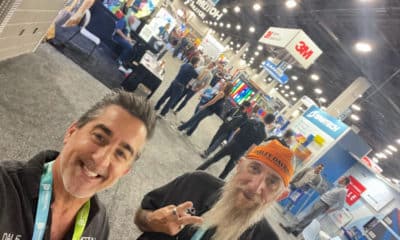
 Dale Salamacha5 days ago
Dale Salamacha5 days agoWhat Makes the Perfect Sign Business Partnership
